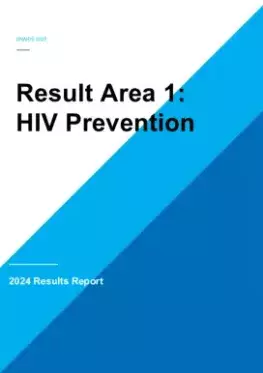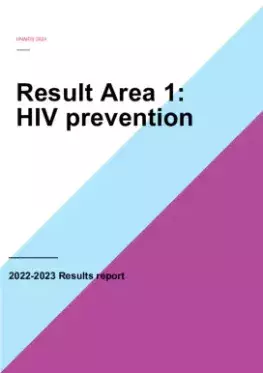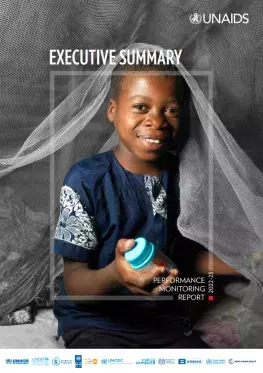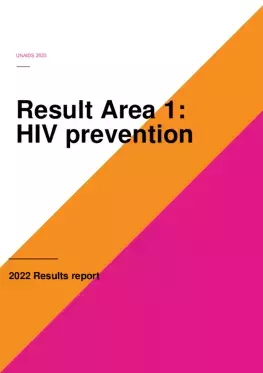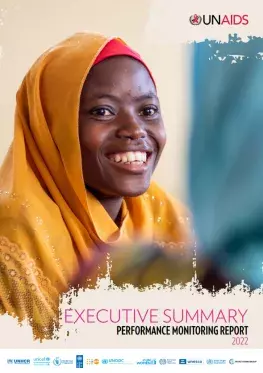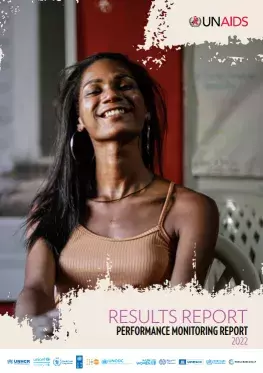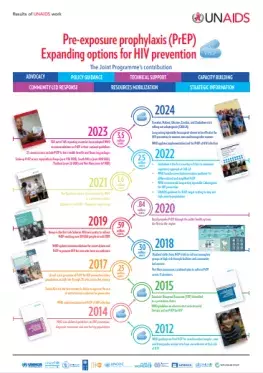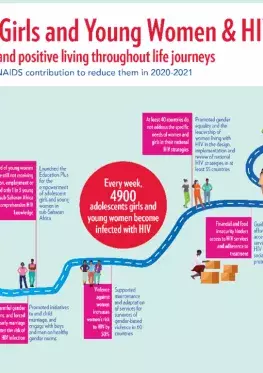The Joint Programme’s leadership, advocacy, normative and implementation guidance and technical support to countries further improved access to better targeted combination HIV prevention interventions including innovations. In 2024, the Joint Programme helped improve national policies on combination HIV prevention for key populations and other populations at risk of HIV and to scale up combination HIV prevention in 84 countries.
Catalytic support from the Joint Programme led to uptake of priority HIV prevention interventions. Prioritized support focused on expanding HIV prevention among key populations. WHO continued to disseminate the 2022 Consolidated guidelines on HIV, Hepatitis and STI prevention, testing, treatment and care for key populations, including through the development new seven new policy briefs in collaboration with community-led global networks of key populations. Globally, by end 2024, 162 reporting countries had incorporated WHO recommendations on pre-exposure prophylaxis (PrEP) into their national guidelines and 73 countries recommend both daily oral PrEP and event-driven (on-demand) PrEP. In 2024, WHO released new Guidelines for HIV post-exposure prophylaxis (PEP), prioritizing broader access to post-exposure prophylaxis (PEP), including through community-based delivery and task sharing to mitigate barriers such as stigma and to ensure timely access post exposure.
Uptake of long-acting cabotegravir and Dapivirine expanded thanks to technical guidance and support of WHO. It also supported several countries in developing and updating sustainability plans for voluntary medical male circumcision (VMMC). Community, government, research and brought together by the Joint Programme improved their knowledge on the acceptability and feasibility of Dapivirine vaginal ring and discuss next steps for phased implementation. The Joint Programme also support for integrated double-method promotion of condom and long-acting reversible contraceptives and voluntary medical male circumcision programming including innovations.
New evidence, sharing of good practices and knowledge sharing including South-to-South learning network, boosted impactful HIV prevention programmes. The Global HIV Prevention Coalition (GPC), co-led by UNFA and UNAIDS Secretariat, supported 38 countries including to 31 countries which assessed their epidemics and identified barriers to prevention by using HIV prevention scorecards. In addition, 25 countries developed HIV Prevention Road Maps or strategies; 22 countries set granular targets and developed costed prevention plans; 26 countries addressed legal, policy and structural barriers. As of 2023, reductions in new HIV infections since 2010 have been steeper and faster in Coalition focus countries than in the rest of the world, with eight of GPC focus countries having reduced their annual numbers of new HIV infections by at least 66% since 2010.
Special efforts and initiatives also focused on HIV prevention for adolescent girls and young women, including responding to their need for sexual and reproductive services as well as prevention and management of gender-based violence especially in eastern and southern Africa. With the Joint Programme’s support, millions of adolescents & youth benefit from prevention and sexual and reproductive health services. Indeed, the Joint Programme further helped address the HIV prevention needs of young people. UNFPA and UNESCO champion Comprehensive Sexuality Education through collaborations with governments and civil society, delivering programmes both within and beyond school settings including community-based training and outreach to empower young people with essential knowledge and skills.
Thanks to UNODC guidance and technical expertise and support, there are new/improved Opioid agonist therapy policy frameworks and HIV prevention among people who use drugs. and HIV services in prisons expanded in some countries. Thanks to the development and implementation of national strategies and guidelines for HIV in prison settings, HIV, viral hepatitis and tuberculosis services expanded in correctional settings in 18 countries
Other Joint Programme contribution to tailored HIV prevention progress include HIV in the workplace programmes in 30 countries; scale up of combination prevention programmes for youth in 32 countries; and evidence-informed strategic interventions to transform unequal gender norms to prevent HIV in 14 countries.


